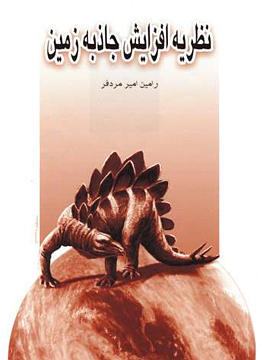Paper 16

New Hearts
We understood that the gravity has been increasing since the past and animals in order to better overcome this high gravity have been forced to build themselves stronger hearts: one-chambered, two-chambered, three-chambered and finally four-chambered hearts. As we know the largest and the most successful animal at present are those who have 4-chambered hearts (e.g. Mammals and Birds). We also understood that the increase of gravity is now continuing. It is clear that the 4-chambered heart, too, in near future, will lose its power of overcoming the gravity and the animals will have to build stronger hearts. That is the question : Are animals thinking of building stronger hearts? Have they taken measures about this? Which method they will use to strengthen their blood-circulation system?
Consider a person who has stood motionlessly in a place for some time. If he continues his motion less standing, because of not receiving enough blood in his brain, he will swoon and fall. Why dose this occur? Why does a person swoon when he stands motionless in a place? Why this is not the case when he walks and his brain receives enough blood? In both of these case, the gravity affects in the same way, the heart in both of them has the same power, in the first case the brain receives enough blood but in second it does not. Why? Because in the second case (walking) some small hearts in other parts of the body help the blood- circulation system and provide enough blood to the brain, but in the first case (motionless standing) these small hearts don't work, so the brain dose not receive enough blood. Where have these small hearts been located in the body? And how they work? These hearts, are parts of the vein which are surrounded by two venous valves. When a person is standing motionless, these hearts do not work but when he starts walking, muscle of foot tightens these veins and makes the blood run out side. Because there are some valves inside these veins which prevent the blood from running downwards, so the blood is always run upwards. In every contracts and expands of muscle of the foot, this part of the foot-vein expands and contracts like a small heart and carries the blood upwards. Therefore, if is clear that this person's heart cannot circulate the blood by itself and is not able to overcome the gravity and send enough blood to the brain. If these small hearts do not help the main heart the person will swoon and fall even while walking, which can occur several times a day. The only failure of these small hearts is that they work just when the animal is walking because they receive their power from the muscles of hands or feet and are not able to expand and contract by themselves.
Wasn't it better that these small hearts had independent muscles for themselves and could contract without the help of hands and feet muscles? In this case, even in motionless state, the brain could receive enough blood and the animal would not swoon. If we consider other classes of animals like Mollusca, we would find out that in the body of some of these animals there are such small independent hearts that help blood circulation system. Octopuses have auxiliary heart in front of their gills that effectively help the main heart in blood circulation system. So it is evident that the nature has already used auxiliary hearts. Nature has also provided the requirements of building auxiliary hearts in the body of Mammals. Just a small muscle is needed in order for a small heart to work. Thus we see that the animals are thinking of stronger hearts for themselves and in the future, there will be animals which, as well as their main heart, they will have auxiliary hearts in their feet that help effectively blood-circulation system.
The increase of gravity will cause the bulk of animals be more smaller than before and those who are not able to face gravity, will have to crawl. Elephants, Rhinoceroses and huge Giraffes will not exist, they will either be extincted or have smaller bulks. (There are Elephants with smaller bulks in Africa at present.)
Some coastal Mammals (like Seals and Walrus) will not be able to come to the shore any more and will become sea-living animals (like Whale, Manatee and Dolphins). Mammals in the future will not have the power of standing erect and will have to crawl (like class of Reptiles which were forced to do so a long time before). Large birds (like Vultures) will not be able to fly and will live on the ground (like Ostrich which was forced to do so already). Small birds, too, will hardly fly.
But some animals out of the Mammals will reach those auxiliary hearts. These animals will overcome to the high gravity and larger their bulks and stand erect. They will provide blood to their high altitudes by the help of their powerful blood-circulation system and will rise their head and won't have to crawl.
But that is the question: Among Mammals, which species have the high chance of reaching a powerful blood-circulation system? After the evolution of their blood circulation system, will they be remained Mammals? Or will they found a new class of animals ? What other characteristics they will have?